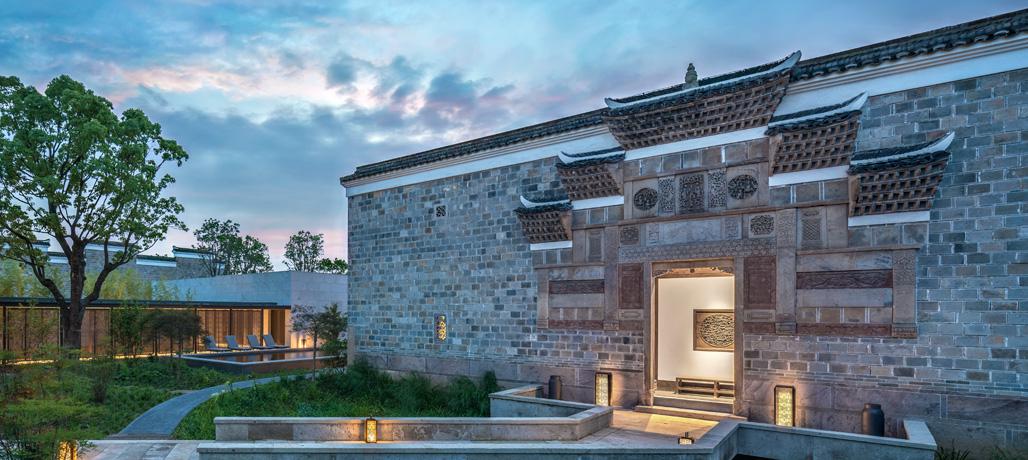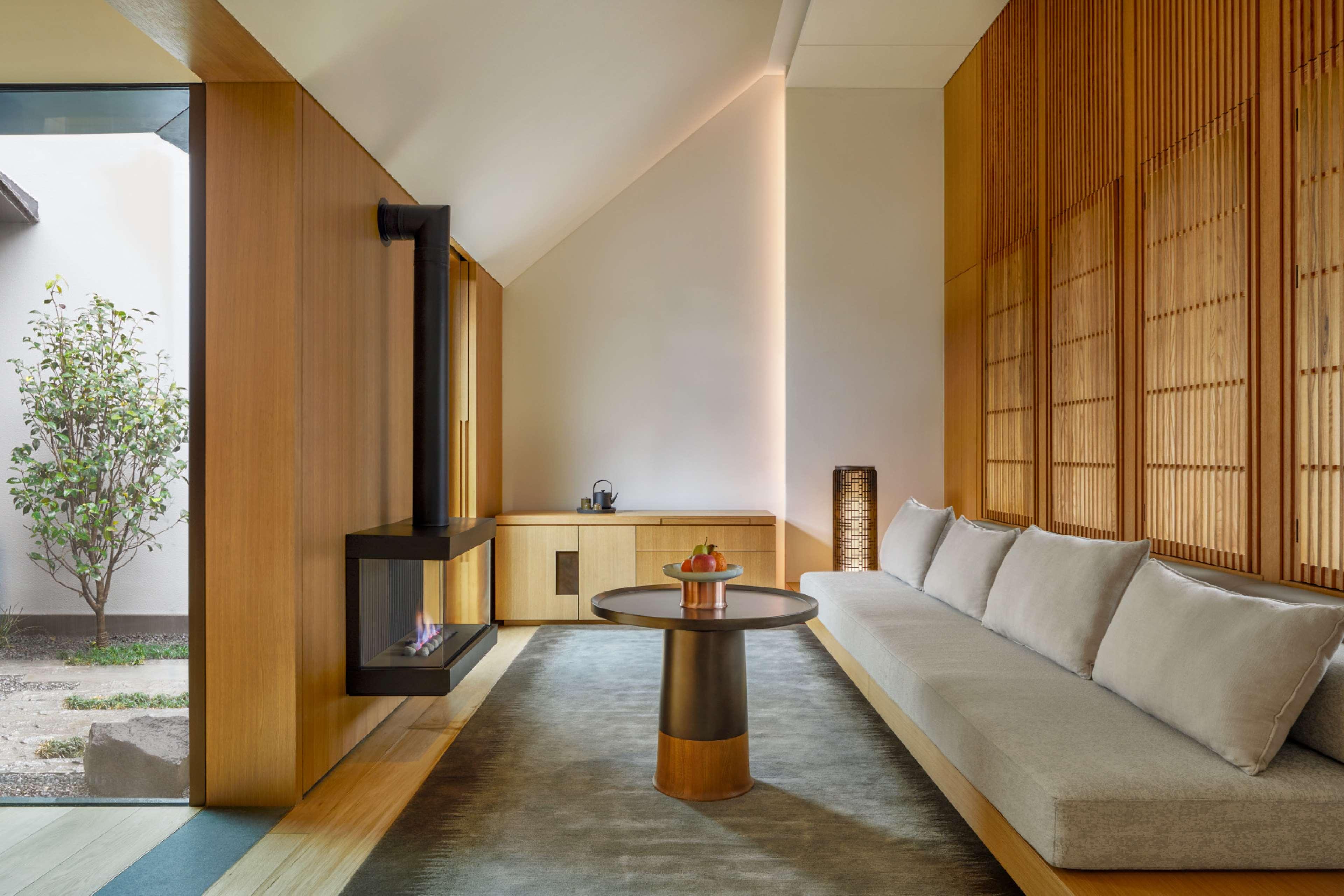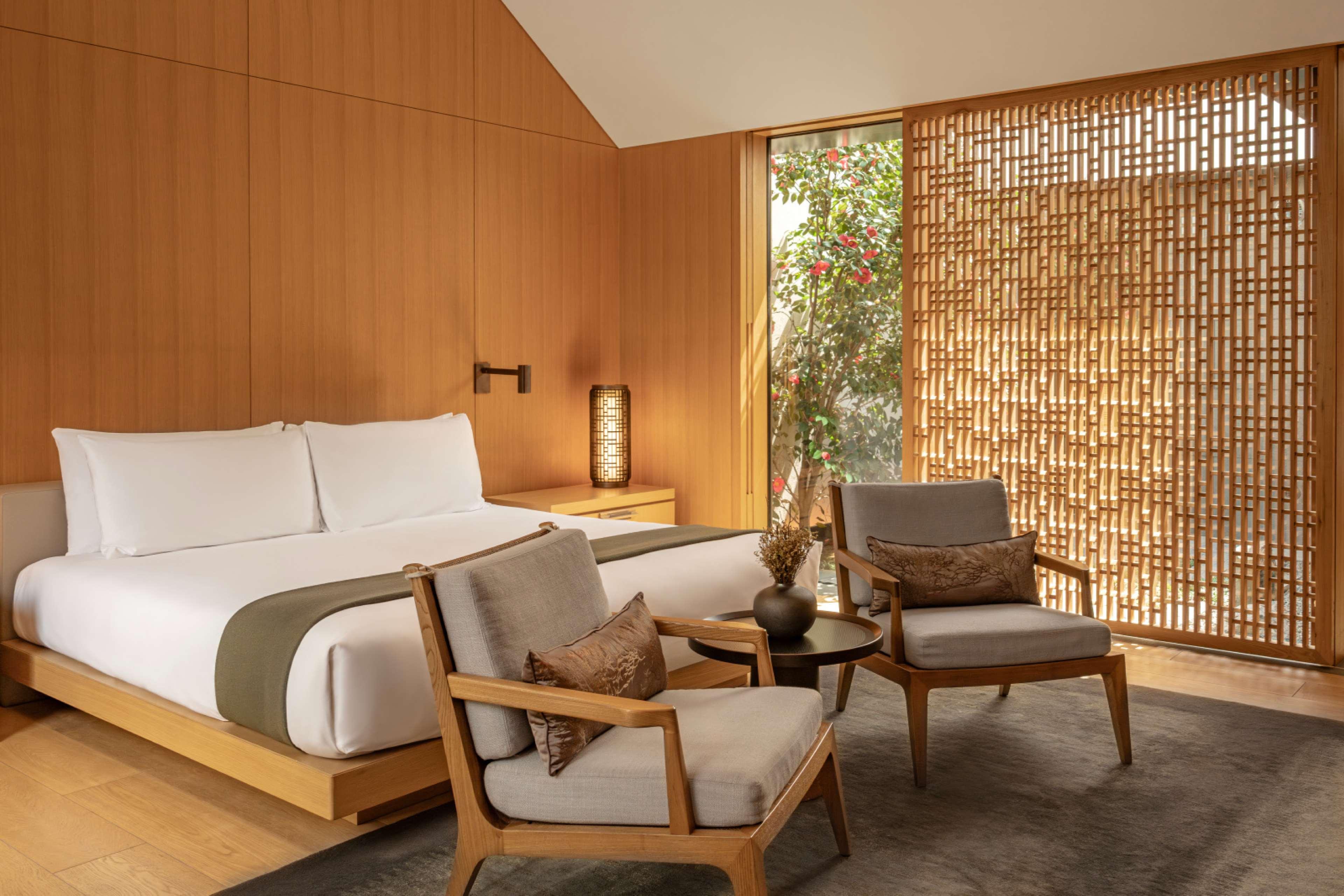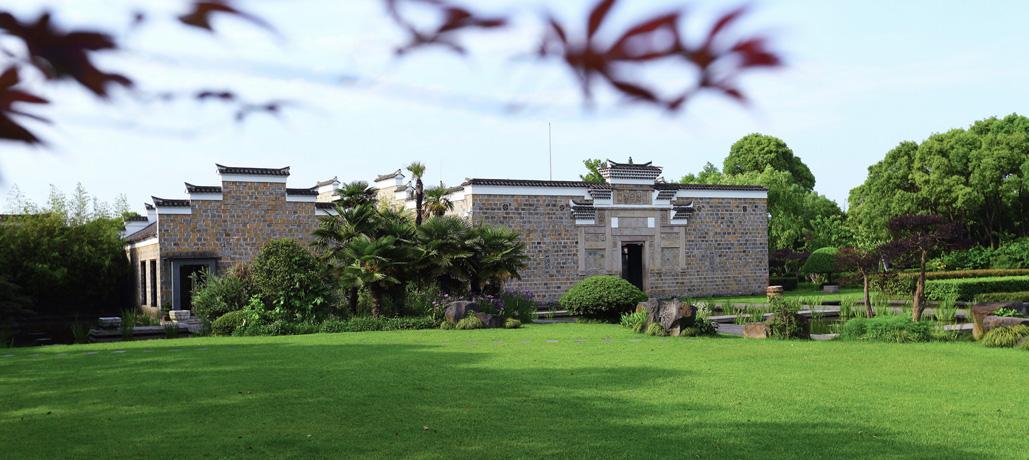Amanyangyun
Ancient villas & camphor trees, cultural activities, luxurious spa, refined dining
Information
6161 Yuanjiang Rd, Min Hang Qu, China, 201111 Get directions
Ancient villas & camphor trees, cultural activities, luxurious spa, refined dining













6161 Yuanjiang Rd, Min Hang Qu, China, 201111 Get directions

"Composed of ancient-meets-modern villas in Shanghai, the three-night program includes immersive cultural activities such as Chinese calligraphy lessons and an urban walking tour, plus a day trip by high-speed rail to Hangzhou to cruise the UNESCO World Heritage Site West Lake." - Rachel Chang Rachel Chang Rachel Chang is a travel and pop culture journalist who contributes to Travel + Leisure, Condé Nast Traveler, Lonely Planet, and more. Travel + Leisure Editorial Guidelines

"Amanyangyun in Minhang District has thousands of majestic camphor on its grounds. Two decades after the Fuzhou-born owner relocated 50 Ming- and Qing-dynasty villas and replanted these trees, a forest has flourished. Through the resort's seedling program, younger guests are invited to learn all about the precious plants and their role in biodiversity’s bigger picture."

"Set the scene.A hushed dream of tea ceremonies and ancient camphor trees, brought into the 21st-century with a calligrapher’s touch by late Australian architect Kerry Hill. Hill’s team designed a zen-geometric modern estate around 14 Ming and Qing dynasty villas, shipped 434 miles from Jiangxi province and painstakingly restored. Ma Dadong, the shy philanthropist behind it all, is often whispered-about and spied on the grounds, but rarely spoken to. What’s the story?In 2002, 29-year-old property millionaire Ma went home to see his parents in Fuzhou City, Jiangxi province, southwest of Shanghai. It was there that he heard of plans for a new reservoir that would submerge a series of nearby ancient villages, and thousands of even older camphor trees, some of them worshipped like deities. Horrified by this cultural desecration, he struck a deal with the government to uproot 10,000 trees and 50 ornate dwellings, some up to 500 years old, moving them piece by piece to a series of warehouses outside Shanghai. In 2005, Ma rebuilt one as an experiment, enlisting a crack team of experts to put every stone, relief, and beam in its correct place, but tweaking and adding new rooms for airy modern purpose. When Aman founder and former head Adrian Zecha came round for dinner in 2009, he was wowed into a big idea: why not make the ancient buildings the foundation of a new Aman resort, surrounded by replanted camphor forests? In 2018, the idea—at once bold and restrained—finally came to fruition. What can we expect from the bedrooms?Every one of the 13 walled antique villas you can sleep in is wholly individual, but each has four or five bedrooms and a thin rectangular pool. Angular modern wings and courtyards were added to the original gray-stone Jiangxi buildings, in which Kerry Hill’s mod-minimal interiors work in harmony with dark nanmu wood pillars and ornate carvings. The 24 newly built suites are classic Aman/Hill—all muted cedar and slate—but with touches like lattice screens and private courtyards nodding to the dynastic vibe. How about the food and drink?Dining, in a row of temple-like minimalist spaces, is about precision rather than culinary fireworks. Lazhu—Cantonese, with hints of Jiangxi—seems primarily aimed at a local market, with sea cucumber and abalone along with more Western-friendly favorites such as a rich crab xiaolongbao. Both kaiseki restaurant Nama and Italian Arva stick broadly to the classics—think oo toro tuna belly sashimi at the former, ravioli cacio e pepe at the latter. All beautifully prepared, of course. Anything to say about the service?The standard Aman ratio is four staff members to every guest, and the multicultural crew here seem extra eager to please. Usually, it’s charming; just occasionally, it borders on intense. What type of person stays here?Well-heeled 30- and 40-something Shanghainese couples fleeing the old French Concession for the weekend. Hong Kong bankers and designers who wouldn't be out of place in a Patek Philippe ad. The odd stiffly formal business group. What’s the neighborhood scene like?There isn’t one. This is Minhang, a Shanghai boondocks; fragments of billboards and urban sprawl can be seen through Amanyangyun’s precision-planted camphor forests. Anything we missed?Nanshufang, the 14th of the ancient villas, is the spiritual heart of Amanyangyun—a cultural center inspired by the scholars' studios of 17th-century China, which reflects China’s growing appreciation of its imperial past. Airy, incensed rooms filled with dark nanmu furniture host master classes in everything from calligraphy to brush painting and the guqin, the seven-stringed instrument favored by Confucius. The instrument’s wave-like vibrato is the background to tea ceremonies that fall somewhere between liturgy and meditation. Morning yoga is at the angular spa, one of the largest in the Shanghai area. Is it worth it, and if so, why?It’s one of the most astonishing restoration projects of any hotel on the planet, executed down to the last stone. But the sheer formal restraint of it all can feel chilly. It’s a hotel to inspire admiration, even awe, but not always warmth." - Toby Skinner

"Work began on this Aman 2,000 years ago, in what is now Jiangxi Province, 400-some miles west of the hotel’s present location on the outskirts of Shanghai. Intrigued? The story of Amanyangyun could hardly be more extraordinary. In 2002, Ma Dadong, a self-made billionaire, took a break from business in Shanghai to visit his parents. When he went back to work he took with him some curious souvenirs of his trip—50 disassembled houses from the Ming and Qing Dynasties and 10,000 camphor trees, the oldest of which were dated back two millennia, ancient earth still clinging to their roots. All were slated for destruction to make way for a dam. The houses were reassembled and transformed into 13 antique villas, 24 courtyard suites, and a ravishing cultural pavilion known as Nanshufang. Welcome to Amanyangyun. The old buildings have been cleverly complemented, extended or, in some instances, encased by new ones, discreet, restrained, and hard-edged, the work of Australian architect Kerry Hill. Nevertheless, there are certain elements of pure theater: the carpet of mood-enhancing mist that, at the press of a button, rolls across your villa’s ornamental garden, for example. Yet it is the old buildings and trees that provide the real drama here and impart a unique sense of spirituality and grandeur. FLASH POINT Nanshufang was originally a school and, in a way, still is. Here, guests can enjoy the pastimes of the Chinese literati: calligraphy, painting, music, incense appreciation and gongfu cha, or "labor-intensive tea-making." +86 21-8011-9999; aman.com; doubles from about $900." - CNT Editors

"Shanghai, for example, saw a slew of luxury hotels open in 2018. To name a few—Amanyangyun, the Bulgari, the Edition, the Bellagio, the Middle House, and the Shimao Wonderland InterContinental (which, built inside an abandoned rock quarry, has 16 floors underground.)" - Elise Taylor